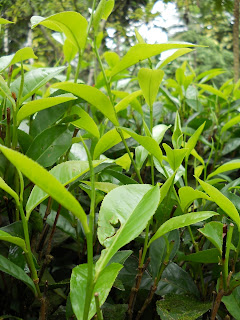 By Steve A. Morrell
By Steve A. MorrellSix month price trends November 2009 to April 2010, indicate growing alarm high growns, particularly, are now in reverse progression. From an average price above Rs. 400. per kilo, January this year the price dip to end April was about Rs.370. Mid growns have more or less maintained their prices at around Rs. 350. Low grown expectations were high. But in this instance too trends were not that rosy. Low elevation teas rose above the Rs.400. mark in January but not really sustained at that level.
Then comes the Mombasa problem. According to Ceylon Tea Brokers PLC, weekly Tea market report, workers from Tea warehouses staged a strike effectively shutting down the Tea distribution network in Mombasa, the Port City, Kenya, host to one of the largest Tea auctions in the world.
Effects of the strike would hit hardest later next week as the Kenyan Tea Trade braces itself for minus price variations.
Approximately 21 % tea was left unsold these sources said.
Repercussions at the Colombo auctions are that with India curtailing exports, and the the Mombasa strike, there would be less Tea in the market, and buyers would pay the extra price in Colombo to make up their orders. This may be temporary, but most definitely positive.
True, Brokers said, we should not gloat on the Kenyan problem, but market indicators are that buyers would gravitate to Colombo, and Ceylon Tea demands would resuscitate to higher levels.
All told however Ceylon Tea is not really out of the woods. Asia Siyaka, in their Tea Market report last week said Chinese Tea exports to the US increased further; from 20.69 % 2008, to 22.17 % 2009.
Significance is that while China broadens its end user tea market, Ceylon Tea seems to be successfully reducing its markets. Market expansion is perhaps not within lexicon of the tea Trade which is causing considerable anxiety.
The question now is that would the new Minister address this problem and evolve stronger strategies to stabilize the Tea industry and ensure its emergence into the 21st Century:( and be second to non). What we mean here are the hypothetical ‘gold’ weavers in the garments trade. (It should not be forgotten that Tea is wholly an indigenous product, but garments have to depend 80 % imported inputs for survival.).
China exports tea to as many as 25 countries, including Pakistan who were one of our major buyers.
Production to March this year have had positive indicators up some 2 million kilos comparing last year. End March readings were 20.49 million kilos. Kenya is now the leading producer in the world; producing 39.17 million kilos to end march this year.
We have had news that the tea business of Van Rees, the Dutch firm, also operating in Sri Lanka, have changed hands. Company sources said the acquisition by Acomo at about $127.26 million augured well for Van Rees business interests internationally ( story attributed to Asia Siyaka Tea market report).
source -www.island.lk
No comments:
Post a Comment